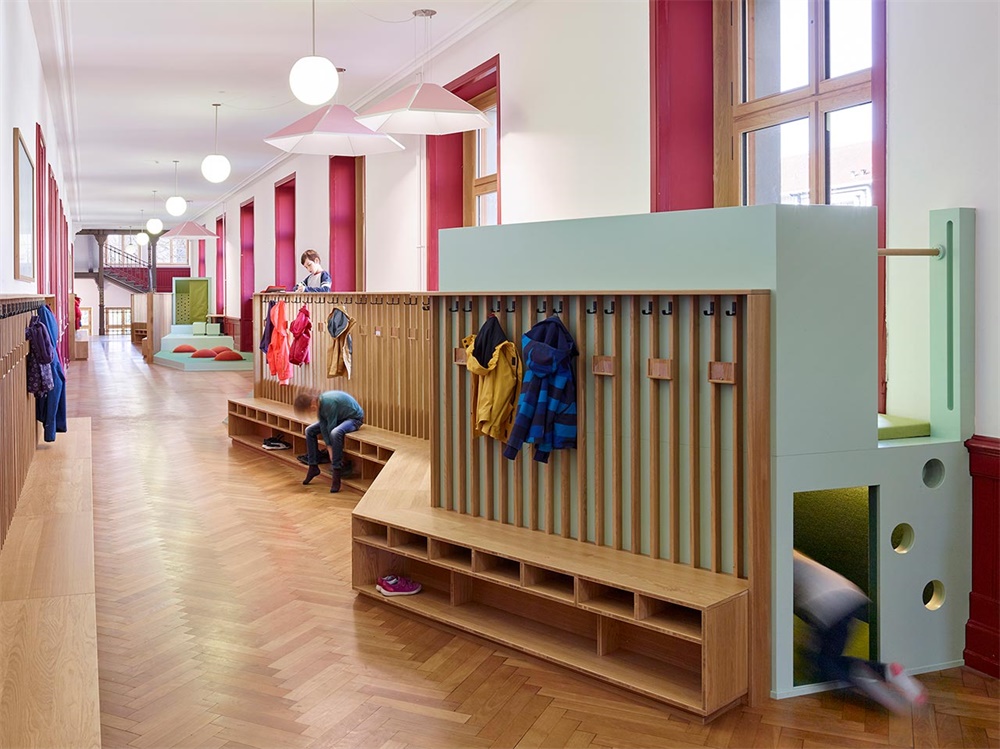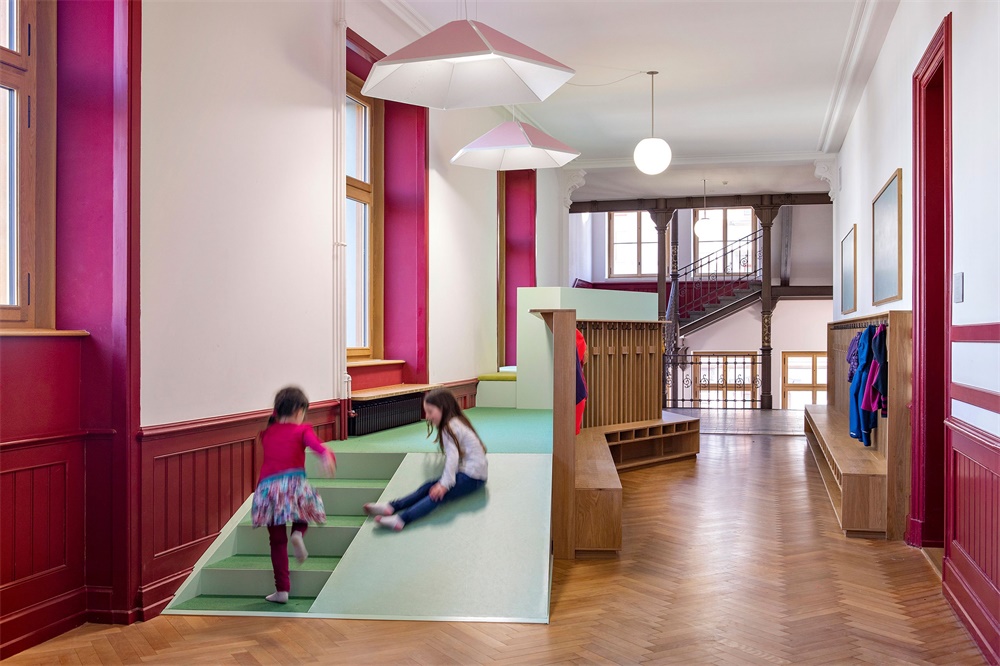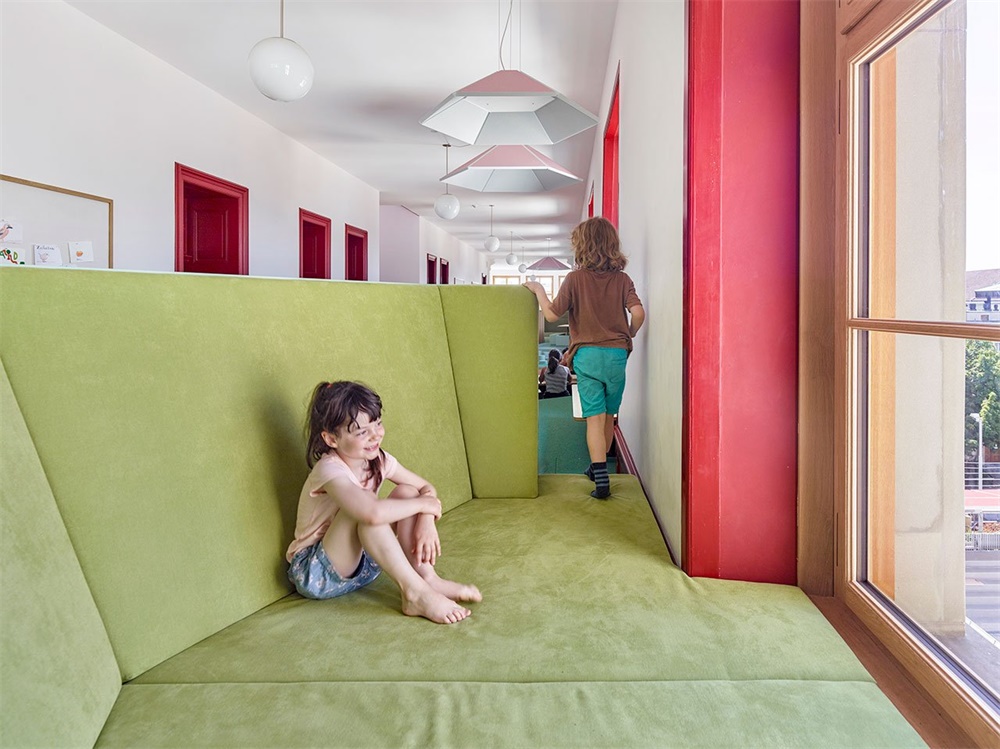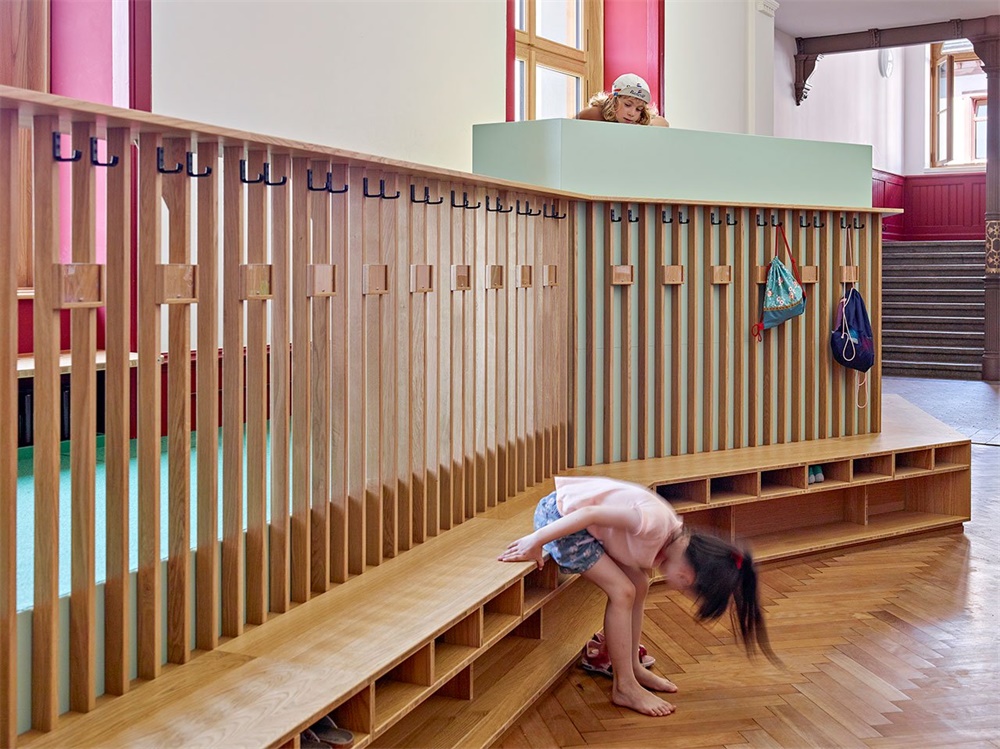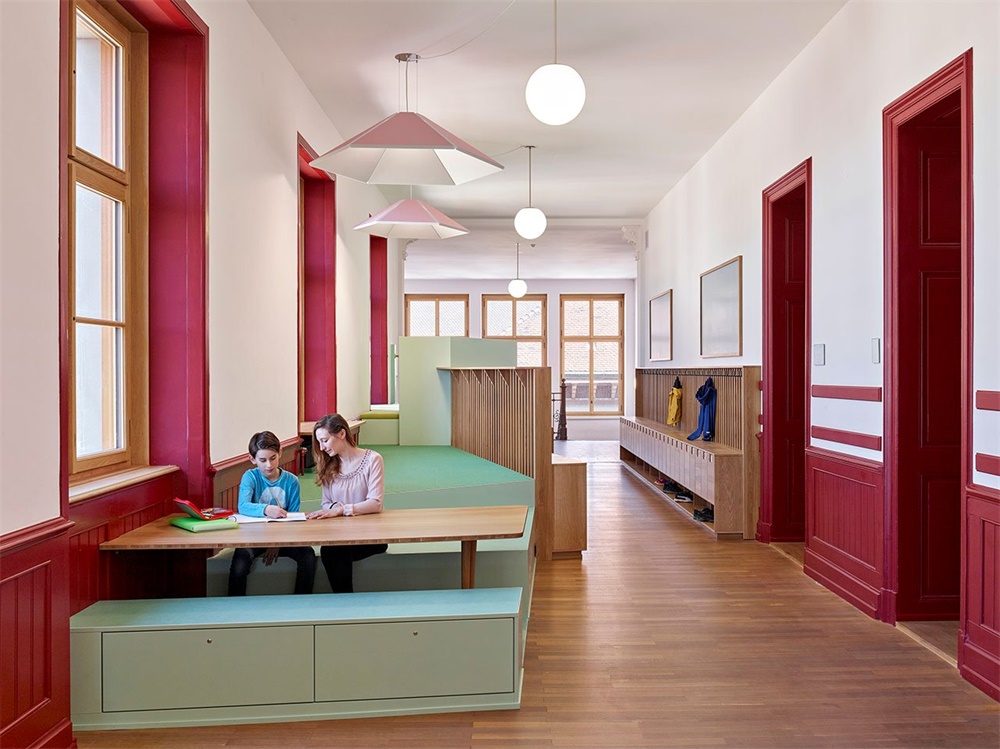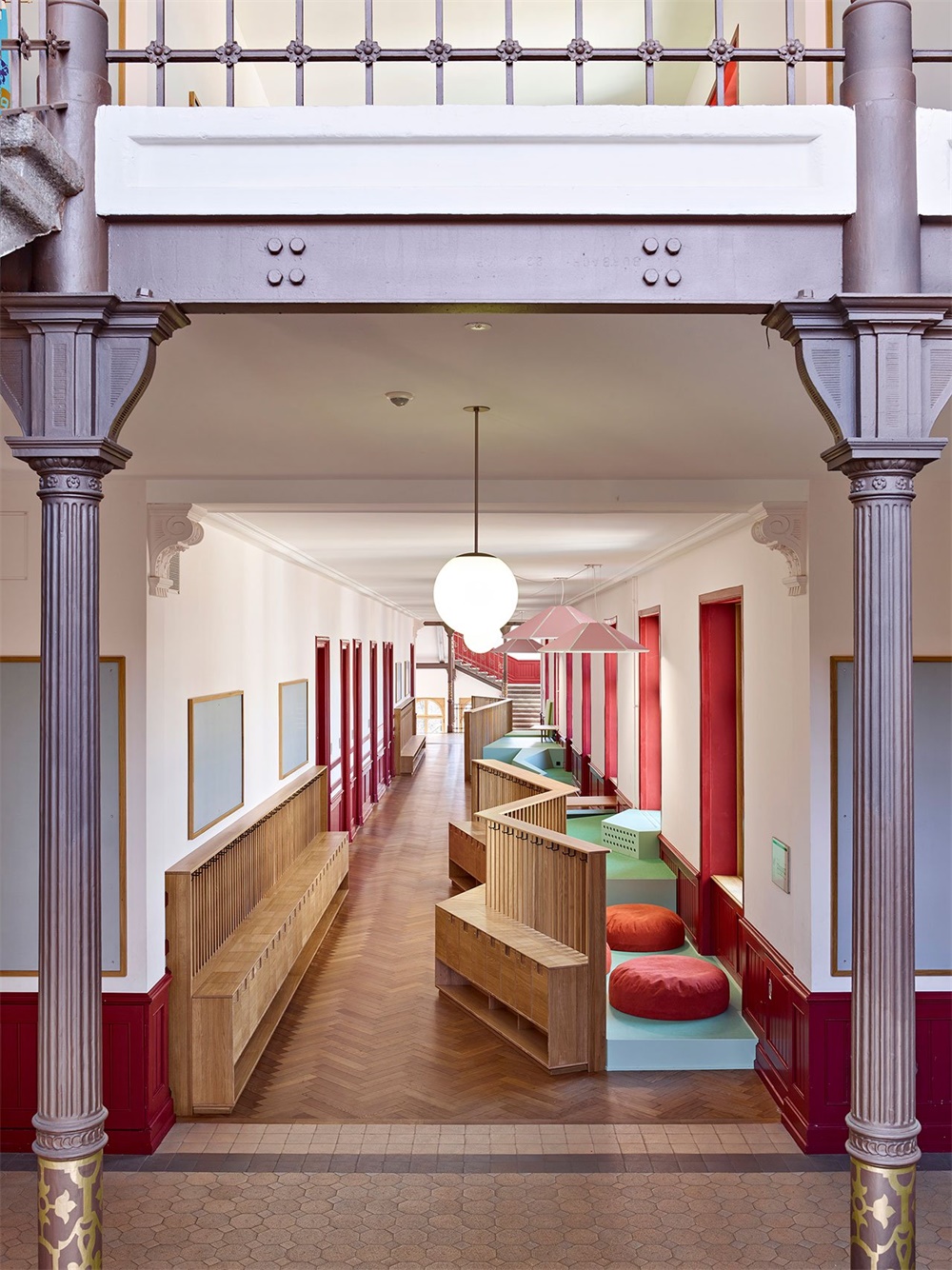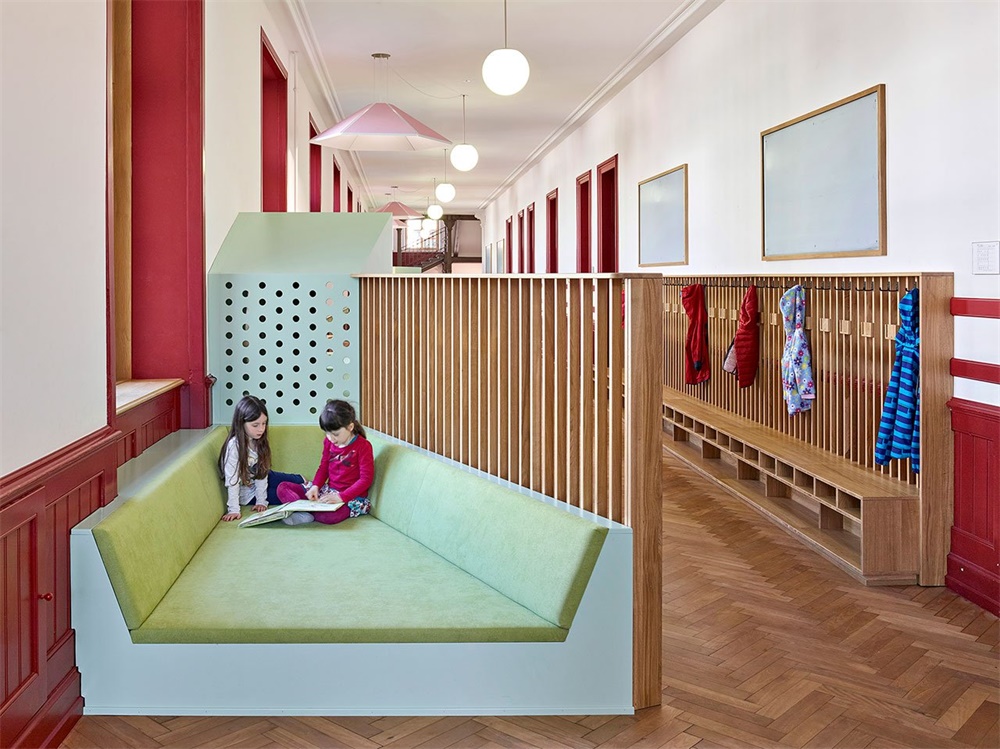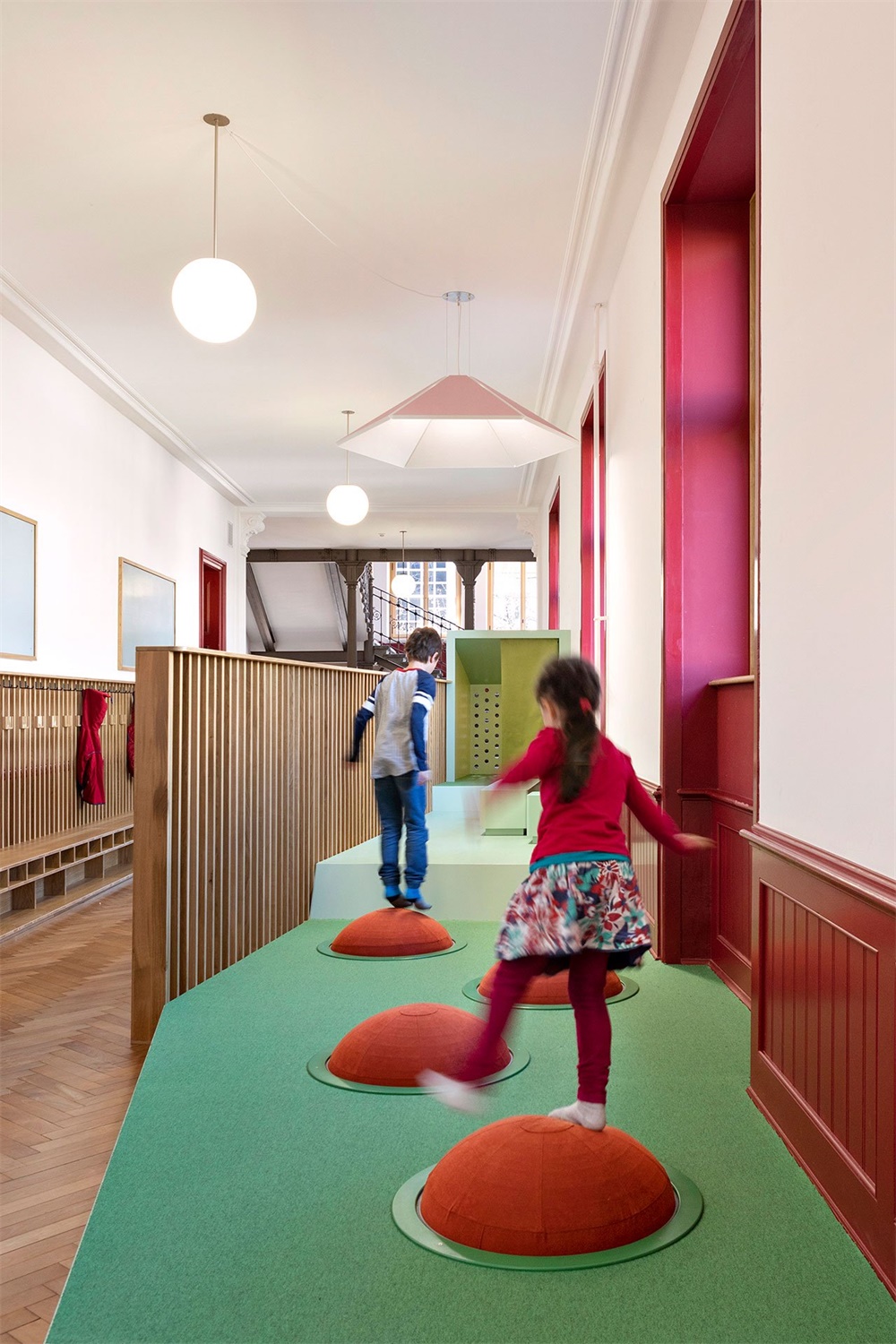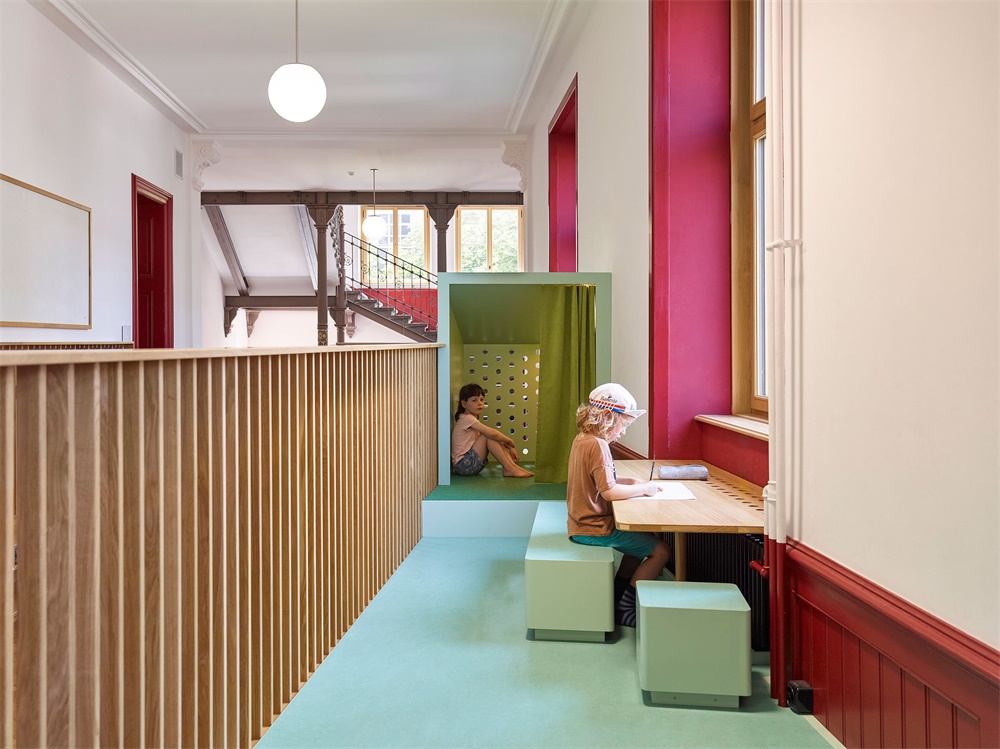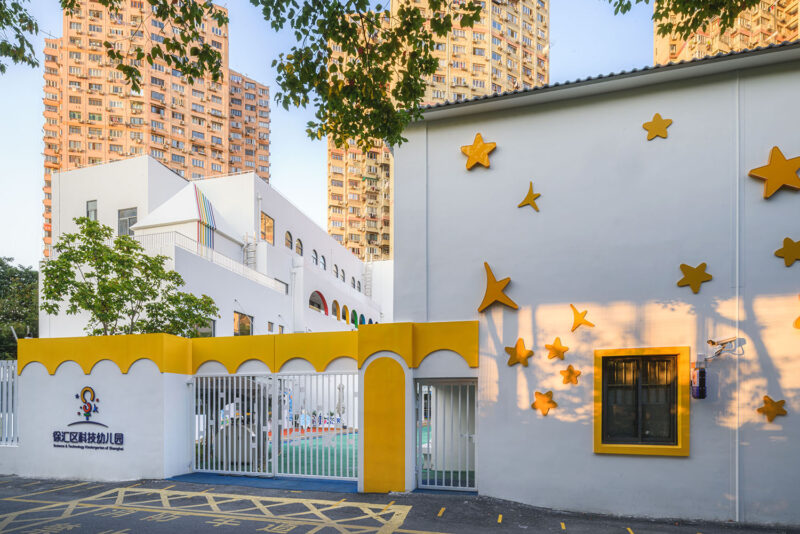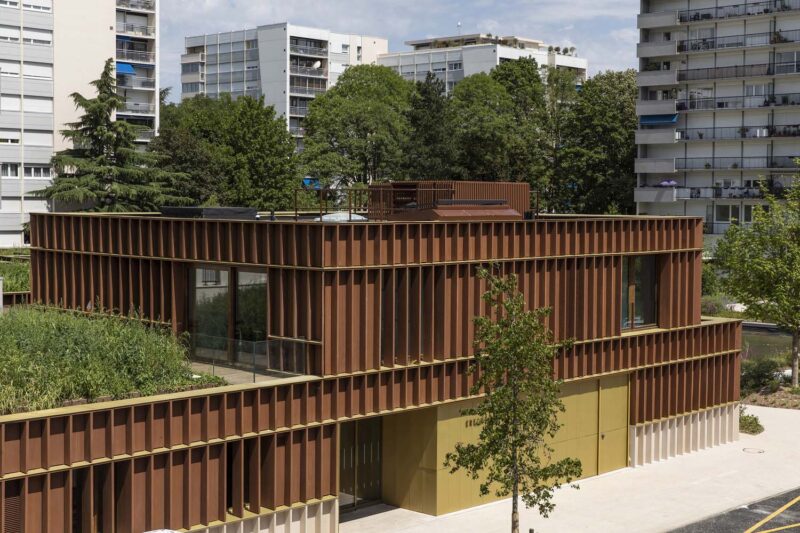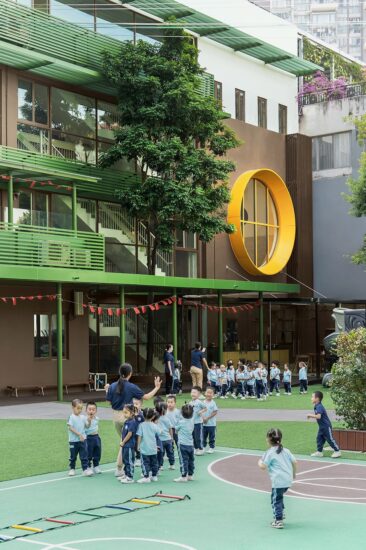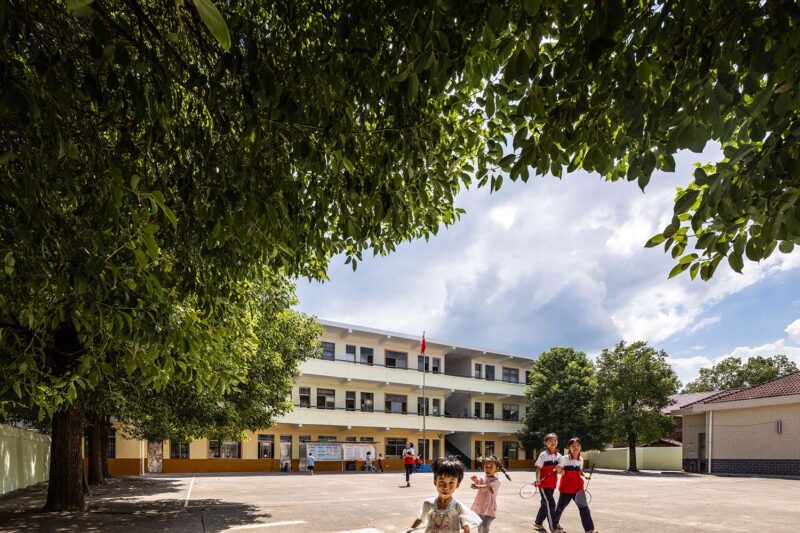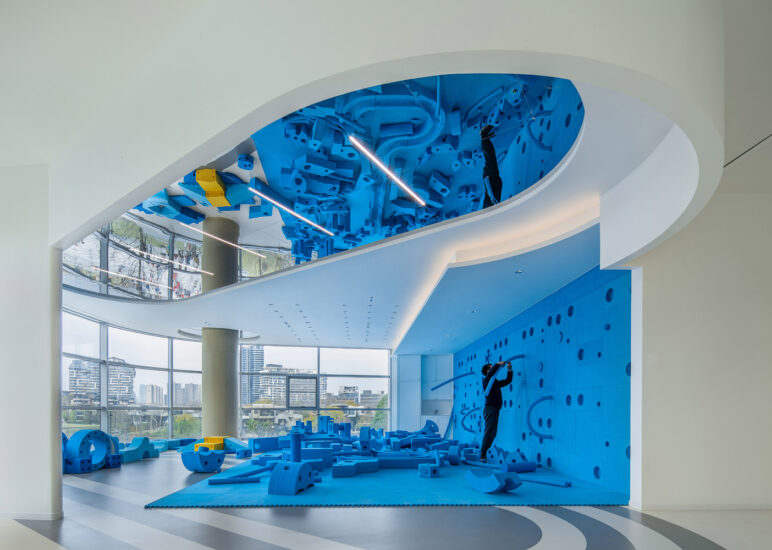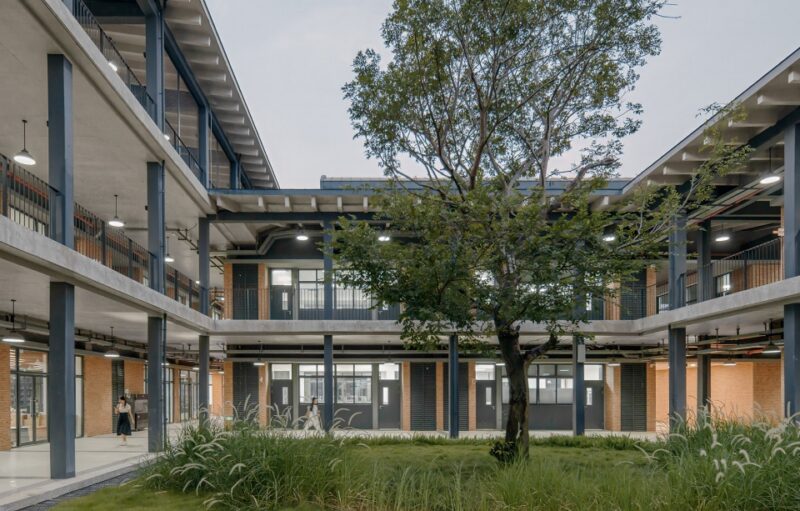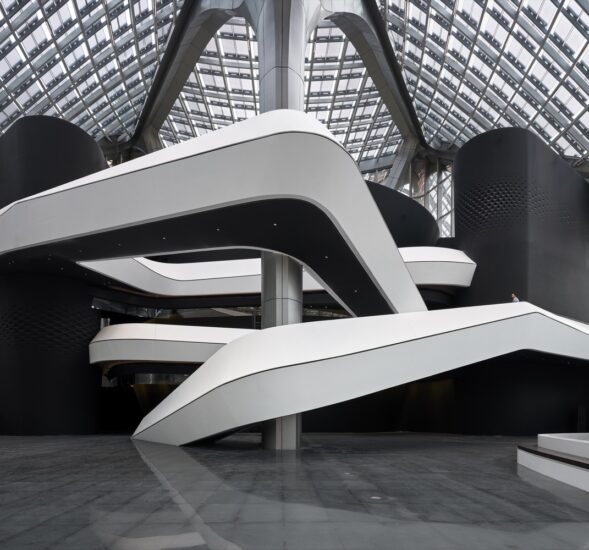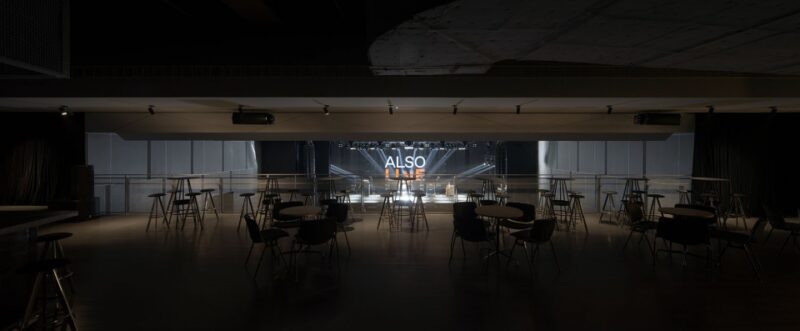當代學校設計已經從傳統的單一使用教室的設計藍圖中脫離出來,取而代之的是更加靈活的布局和多功能的空間。這對於新的教育項目來說很好,但是對於現有的學校結構呢?瑞士設計工作室ZMIK的最新作品“ Learning Scapes”展示了設計創造現代學習環境的力量,即使在古老的曆史建築中,如瑞士巴塞爾的St. Johann小學(建於19世紀80年代,新文藝複興風格)。ZMIK的設計巧妙地融入了學校的曆史建築肌理,將三條走廊改造成開放的、混合式學習和娛樂區域,以滿足多種類型的教學需求,從小組練習到個人作業,從基於活動的學習到閱讀和討論。
Contemporary school design has moved away from the traditional blueprint of identical, single-use classrooms embracing instead more fluid layouts and multi-functional spaces. This is all well and good for new educational projects but what about the existing school fabric? Enter Swiss design studio ZMIK whose latest endeavour, “Learning Scapes”, showcases the power of design to create modern learning environments even in age-old historic buildings like St. Johann primary school in Basel, Switzerland, which was built in the 1880s in the Neo-Renaissance style. Playfully integrated into the school’s historic building fabric, ZMIK’s intervention has transformed three corridors into open-plan, hybrid learning and recreation areas that cater to multiple types of pedagogy, from group exercises to individual work, and from activity-based learning to reading and discussions.
根據教師和學生的想法和要求,每條走廊被劃分為五個區域:中間是一個中央娛樂區,兩側各有一個衣帽間,中間是一個“景觀”學習區,中間用鋸齒形的木隔板隔開。入口處是放置衣帽區域,從樓梯進來處過渡了學習和娛樂區域,讓學生們不僅可以把外套、包和鞋子留在衣帽放置處,還可以解決他們物品保存問題。曲曲折折的隔牆由橡木板條表麵製成,與拚花地板的材質和人字形圖案形成呼應。
Based on both the teachers and students’ ideas and requirements, each corridor is divided into five zones: a central recreation area flanked on either side by a cloakroom and a “landscaped” learning zone which are separated by zigzagging timber partitions. Conceived as portals, the cloakrooms buffer the learning and recreation areas from the staircases, allowing the students not only to leave their coats, bags and shoes behind but also their troubles. Made out of slatted oak surfaces, the zigzagging partitions echo the material and herringbone pattern of the parquet floors.
梯田式學習景觀的地形沿著走廊的長度變化,以創建不同層次的各種空間。滑梯、平衡梁和蹦跳球為學習過程注入了樂趣和遊戲,有“棲息”和“洞穴”等名稱的空間充當了休息處,而各種內置學習桌台允許個人和小組學習。這並不是說所有的東西都是嚴格為特定用途設計的,相反,設計師選擇了混合用途。 例如,“蜥蜴尾巴”可用作平衡木,書桌或靠背。
The topography of the terraced learning landscapes shifts along the length of the corridors in order to create a variety of spaces on different levels. Slides, balancing beams and bouncy balls inject fun and games into the learning process, alcoves and niches with names such as the “perch” and the “cave” act as retreats, while various built-in work surfaces allow for individual and group study. This is not to say that everything is strictly designed for a particular use, on the contrary, the designers have opted for hybrid uses; the “lizard tail” for example can be used as a balancing beam, desk or back rest.
沿著建築窗戶設置的學習區域有充足的自然光,輔以一個動態照明係統,有趣地懸浮在上空的聲音控製雨傘燈光中。特色的混合材質如亞麻布、地毯和綠色紡織品。從開心果到石灰的顏色,完美地與氧化紅色的壁板相得益彰,“學習景觀”在色彩上與曆史建築的莊嚴典雅形成鮮明對比,同時在空間和概念上更新了當代學校設計課程。
Unfolding alongside the building’s windows, the learning zones are blessed with plenty of natural light, supplemented by a dynamic lighting system integrated in the acoustic umbrellas that playfully hover above. Featuring a mix of textures such as linoleum, carpet and textiles in green, ranging from shades of pistachio through to lime, which perfectly complement the oxide-red wainscoting, the “learning scapes” certainly stand out chromatically against the stately elegance of the historic building, whilst spatially and conceptually updating the curriculum of contemporary school design.
主要項目信息
項目名稱:Learning Spaces
項目位置:瑞士巴塞爾
項目類型:公共空間/校園設計
完成時間:2019
設計公司:ZMIK
攝影:WEISSWERT


